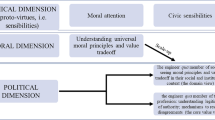Abstract
The teaching of engineering ethics is on the increase at universities around the United States. The motivation for this increase (WHY?) has several driving forces, including: a new Accreditation Board for Engineering and Technology (ABET) accreditation criteria; new questions on Professional Engineering (PE) licensing examinations; new industrial marketplace needs; and a growing awareness in the engineering profession of a need for ethical sensitivity to the consequences of our actions as engineers.
The subject (WHAT?) is likely to be taught quite differently at each school, depending upon who is teaching it, in which department, and to which audience. The approach may range from applied ethical moral theory to case-based engineering consequences; with many different mixes within these two extremes. Common features for all approaches are the generic kinds of problems dealt with and the kinds of cases utilized.
Finally, the overall approach (HOW?) is perhaps as varied as the number of schools now teaching the subject. Some observers now estimate this number to be between 10 and 20 percent of all engineering schools. Again, the approaches range from stand-alone courses, elective or required, to segments in other courses whether at the introductory freshman or capstone design senior level. Some schools are adopting the pervasive approach of inserting small ethics segments into all or most of the required engineering courses.
This paper explores some details of the WHY?, WHAT?, and HOW?, and presents several examples of the various approaches cited above. It ends with a brief description of a stand-alone, upper division, three credit course now required of all engineering majors (about 600–700 per semester) at Texas A&M University.
Similar content being viewed by others
References
These are the so-called “Hasting Center Goals”, Callahan, D. “Goals in the Teaching of Ethics,” in: eds: Callahan, D. & Bok, S., (1980) Ethics Teaching in Higher Education, Plenum, New York.
Rabins, M., Harris, E. & Hanzlik, J. (1996) “NSF/Bovay Endowment Supported Workshop to Develop Numerical Problems Associated with Ethics Cases for Use in Required Undergraduate Engineering Courses,” 1996 Annual Professional Society Meeting, Washington, D.C..
Two other valuable web sites with a wealth of engineering ethics resource material are www4.ncsu.edu.edu/unity/users/jljherkert/ethicind.html and ethics.cwru.edu Professor Joseph Herkert of North Carolina State University developed the former. It has many computing ethics, environmental ethics, and electrical engineering cases. Professor Caroline Whitbeck, originally at MIT and subsequently at Case Western Reserve University developed the latter. Both web sites are excellent resources for the teacher just embarking into the engineering ethics teaching domain.
Vesilind, P.A. & Gunn, A.S. (1996) Engineering Ethics and the Environment, Cambridge University Press, United Kingdom.
Johnson, D.G. (1993) Computer Ethics, 2nd ed., Prentice-Hall, Englewood Cliffs, NJ.
Martin, M.W. & Schinzinger, R. (1996) Ethics in Engineering, 3rd ed., McGraw Hill Book Company, New York.
Whitbeck, C. (1998) Ethics in Engineering Practice and Research, Cambridge University Press, United Kingdom.
Author information
Authors and Affiliations
Rights and permissions
About this article
Cite this article
Rabins, M.J. Teaching engineering ethics to undergraduates: Why? What? How?. SCI ENG ETHICS 4, 291–302 (1998). https://doi.org/10.1007/s11948-998-0021-2
Issue Date:
DOI: https://doi.org/10.1007/s11948-998-0021-2




